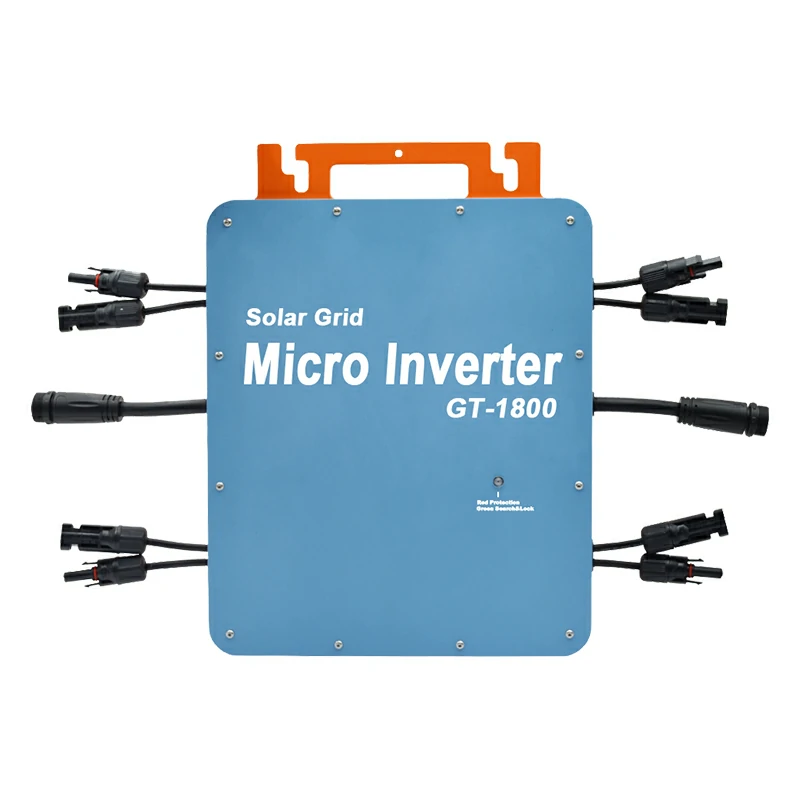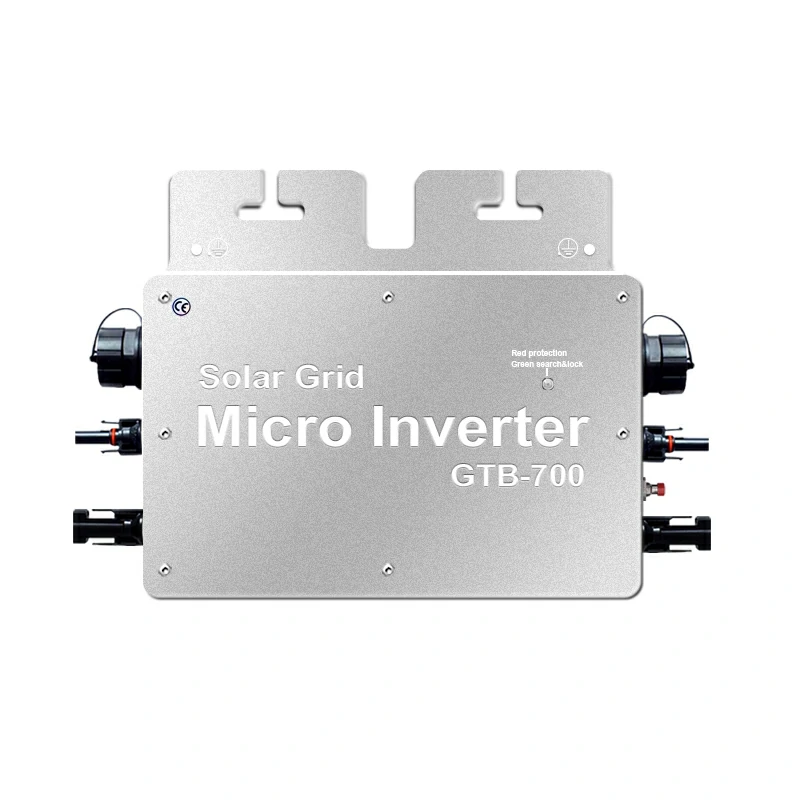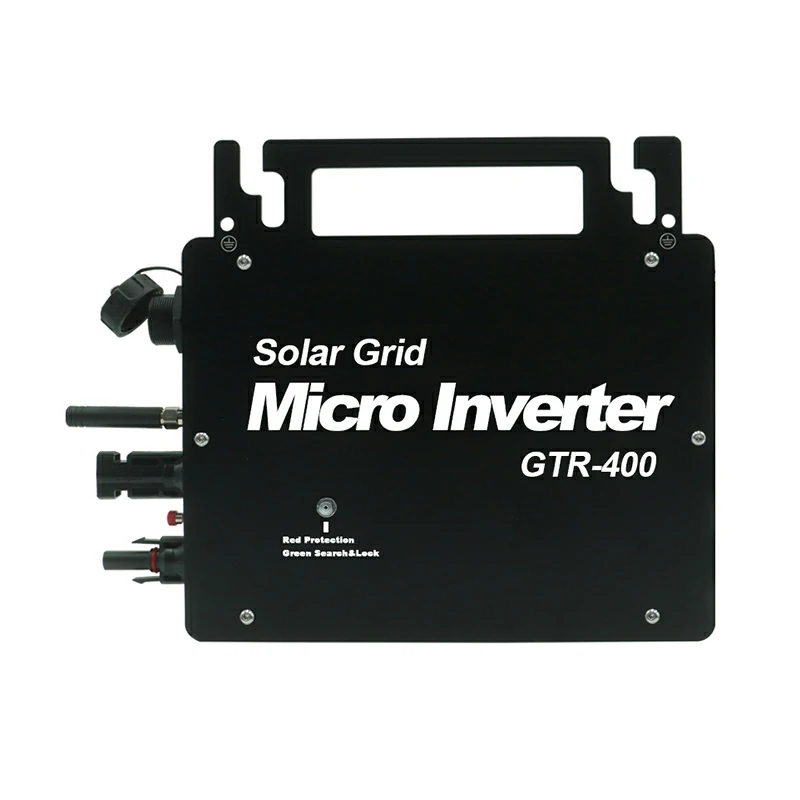I. Introduction
Solar energy has rapidly gained popularity as a sustainable solution for both residential and commercial energy needs. As more consumers look to invest in solar power systems, understanding the various types of setups becomes crucial, especially for those considering Grid-Connected Inverters. Choosing the right system can directly impact both performance and long-term energy savings.
One of the key components in modern solar systems is the Micro Inverter. Unlike traditional string inverters, which manage power conversion for an entire array of panels, micro-inverters work at the individual panel level. This offers enhanced performance, flexibility, and reliability, making them a preferred choice for many buyers.
In this article, we will explore the differences between off-grid and grid-tied solar systems, with a focus on how grid-connected micro-inverter systems operate. By the end, you will have a clearer understanding of which setup might be best suited to your needs.

II. Overview of Solar System Types
Off-Grid Solar Systems
Off-grid solar systems are designed to operate independently from the main power grid. These systems store energy in batteries, providing power even when sunlight is not available, such as during nighttime or cloudy days. This level of energy independence makes off-grid systems ideal for remote locations where access to the grid is limited or unavailable.
However, off-grid systems come with their own challenges. The cost of battery storage can be significant, and regular maintenance is required to ensure long-term reliability. Additionally, without a connection to the grid, the system must be carefully sized to meet the user’s energy needs, which can be challenging during periods of low sunlight.
Grid-Tied Solar Systems
In contrast, grid-tied solar systems are connected to the main power grid, allowing users to draw electricity from the grid when their solar panels are not producing enough power. This setup is more cost-effective than off-grid systems because there is no need for expensive battery storage. Instead, any excess electricity generated by the solar panels can be fed back into the grid, often resulting in credits through a process called net metering.
The main advantage of grid-tied systems is their efficiency and reliability, particularly in areas with stable electricity grids. However, these systems are dependent on the grid, meaning that in the event of a grid outage, the solar system may also stop supplying power unless equipped with additional backup solutions.
III. Micro-Inverters in Solar Systems
Micro-inverters play a critical role in enhancing the performance of both off-grid and grid-tied solar systems. Unlike traditional string inverters, which convert the direct current (DC) from all the solar panels in a system into alternating current (AC) collectively, Micro Inverters perform this conversion at the individual panel level. This unique feature offers several benefits to solar system owners.
For starters, micro-inverters optimize the performance of each panel individually. In traditional setups, the output of all panels can be limited by the weakest-performing panel (e.g., if one panel is shaded or dirty). With micro-inverters, each panel operates independently, maximizing the total energy production. This makes micro-inverters particularly useful in scenarios where shading, dirt, or mismatched panels might otherwise compromise system performance.
In addition to enhanced energy production, micro-inverters offer greater flexibility when expanding a solar system. Homeowners and businesses can easily add more panels over time without worrying about overloading or mismatching the inverter. Moreover, micro-inverters improve the safety of solar installations by reducing the voltage of the system, as DC is converted to AC at the panel level.
In grid-connected micro-inverter systems, these benefits are amplified. By tying into the grid, users can take full advantage of net metering, feeding excess electricity back into the grid while optimizing the output of each solar panel individually.
IV. Comparison of Off-Grid and Grid-Tied Systems with Micro-Inverters
Performance Comparison
When comparing off-grid and grid-tied systems that use micro-inverters, the most notable difference lies in their performance and reliability under different conditions. Grid-connected micro-inverter systems generally provide higher efficiency due to their ability to work with the utility grid. This ensures a constant flow of electricity, whether it is generated from the solar panels or sourced from the grid, allowing the system to balance power needs more effectively.
Off-grid systems, on the other hand, rely solely on solar panels and battery storage. In such systems, micro-inverters still optimize individual panel performance, but users must carefully manage their energy usage to prevent depleting stored power. This can become a challenge in low sunlight conditions, as there is no grid to fall back on for additional electricity.
Cost and Efficiency Comparison
From a cost perspective, grid-connected micro-inverter systems tend to be more affordable in the long run. Although the initial cost of micro-inverters may be higher than traditional string inverters, the increased energy production and efficiency help offset these costs over time. For users tied to the grid, the absence of battery storage also reduces upfront investment and maintenance costs.
In contrast, off-grid systems with micro-inverters require significant investment in batteries, which can drive up costs. These systems are typically less efficient in terms of cost per watt of electricity generated, especially in areas with inconsistent sunlight. That said, they are invaluable in remote locations where grid access is not an option.
V. Key Considerations When Choosing Grid-Connected Inverters
Suitability for Different Use Cases
When choosing a Grid-Connected Inverter, it is essential to evaluate your energy needs, location, and long-term goals. Grid-connected micro-inverter systems are best suited for homeowners and businesses located in areas with stable access to the grid and good sunlight exposure. They offer optimal energy production with minimal maintenance and allow for future expansion with ease.
On the other hand, those living in remote locations or areas prone to frequent grid outages may find off-grid systems more appropriate. However, they should be prepared for the higher costs associated with battery storage and system maintenance.
Factors to Consider Before Purchasing
Before purchasing a Grid-Connected Inverter, there are several factors to consider. First, ensure that the micro-inverters are compatible with your solar panels and meet your energy needs. System scalability is another important consideration, especially for those planning to expand their solar array in the future.
Additionally, look for products with strong warranties and proven reliability. Micro-inverters are a significant investment, so it is important to choose a product from a reputable manufacturer. Maintenance requirements and support availability should also be factored into your decision.
VI. Conclusion
In summary, Micro Inverters have revolutionized the way solar systems operate, offering enhanced efficiency, flexibility, and safety. For those considering Grid-Connected Inverters, the choice between off-grid and grid-tied systems will largely depend on their specific energy needs and location.
Grid-connected micro-inverter systems provide a cost-effective, high-performance solution for users with access to the power grid. They offer the benefit of net metering, reduced maintenance costs, and greater flexibility for system expansion, making them an ideal choice for many buyers.
Ultimately, consulting with a solar energy professional can help you determine the best setup for your needs, ensuring you make a smart, long-term investment in your energy future.




